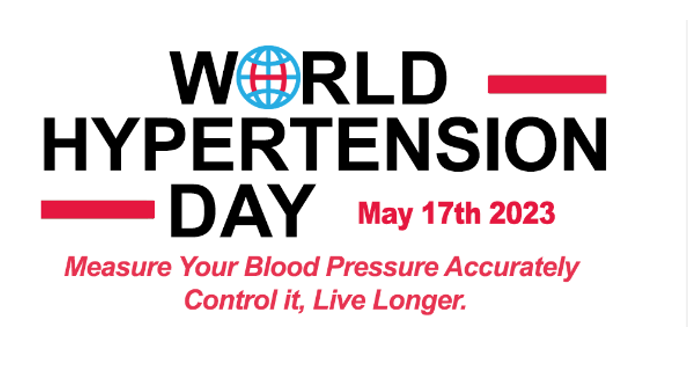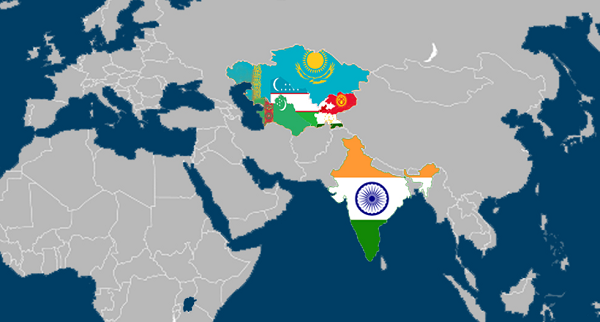- Courses
- GS Full Course 1 Year
- GS Full Course 2 Year
- GS Full Course 3 Year
- GS Full Course Till Selection
- MEP (Mains Enrichment Programme) Data, Facts
- Essay Target – 150+ Marks
- Online Program
- GS Recorded Course
- NCERT- First Ladder
- Polity
- Geography
- Economy
- Ancient, Medieval and Art & Culture AMAC
- Modern India, Post Independence & World History
- Environment
- Governance
- Science & Technology
- International Relations and Internal Security
- Disaster Management
- Ethics
- Current Affairs
- Indian Society and Social Issue
- CSAT
- 5 LAYERED ARJUNA Mentorship
- Public Administration Optional
- ABOUT US
- OUR TOPPERS
- TEST SERIES
- FREE STUDY MATERIAL
- VIDEOS
- CONTACT US
Understanding the Global Report on Hypertension
Understanding the Global Report on Hypertension
Latest Context:
Recently, during the 78th session of the United Nations General Assembly (UNGA), the World Health Organization (WHO) released a significant report titled "Global report on hypertension: The race against a silent killer."
This report sheds light on the worldwide implications of hypertension, commonly known as high blood pressure, and marks the first of its kind by the WHO
Key Highlights of the Report
-
A Global Epidemic:
- One in three adults worldwide suffers from hypertension.
- Hypertension cases have doubled from 650 million to a staggering 1.3 billion between 1990 and 2019.
- About 33% of adults aged 30-79 worldwide are affected by hypertension.
- Sadly, roughly four out of every five people with hypertension are not adequately treated.
-
India's Hypertension Burden:
- India has approximately 188.3 million adults aged 30–79 grappling with hypertension.
- The rate of high blood pressure in India is a bit less than the average worldwide, which is 31%.
- To reach a 50% control rate, India needs to ensure an additional 67 million people with hypertension receive effective treatment.
- Achieving this progress could avert 4.6 million deaths due to high blood pressure by 2040.
-
Inadequate Treatment:
- Shockingly, around 80% of individuals with hypertension do not receive adequate treatment.
- Proper treatment for high blood pressure could save the lives of 76 million people, protect 120 million from strokes, avoid 79 million from heart attacks, and prevent 17 million cases of heart failure by the year 2050.
-
Disparities in Treatment Coverage:
- Treatment coverage for hypertension varies significantly among countries, with high-income nations having better coverage rates.
- The WHO region of the US leads with a 60% coverage rate, while the African region lags behind at 27%.
- The majority of adults with high blood pressure are found in countries that have lower to middle-level incomes.
-
The Urgency of Timely Treatment:
- Nearly 30% of individuals with uncontrolled hypertension exhibit blood pressure measurements above the threshold warranting urgent treatment.
- Globally, the percentage of adults aged 30–70 taking medication for hypertension has doubled from 22% in 1990 to 42% in 2019.
- Treatment availability and access have increased fourfold during this time, now reaching 21%.
The WHO's Call to Action:
- The WHO stresses the importance of giving top priority to preventing, detecting early, and managing hypertension effectively as part of national health plans.

Understanding Hypertension
- Hypertension, or high blood pressure, occurs when the pressure in your blood vessels is too high (140/90 mmHg or higher).
- While common, it can be a serious health concern if left untreated.
- Blood pressure is represented as two numbers: the systolic (when the heart contracts) and diastolic (when the heart rests) numbers.
- World Hypertension Day is observed on May 17 each year to raise awareness about hypertension and promote its prevention and control.
Risk Factors:
Consuming a lot of salt, not staying physically active, drinking too much alcohol, and our genetic makeup can all lead to high blood pressure.
Symptoms:
Most individuals with hypertension do not experience noticeable symptoms. Very high blood
pressure can lead to headaches, blurred vision, chest pain, and other symptoms.
Complications of Uncontrolled Hypertension:
Severe heart issues, including chest pain, heart attacks, heart failure, and irregular heartbeats, as well as an increased risk of stroke due to impaired blood flow to the brain.
Treatment:
Managing hypertension involves lifestyle changes like adopting a low-salt diet, weight loss, physical activity, quitting tobacco, and medications when necessary.
Initiatives:
- Globally, the WHO and the United States Centres for Disease Control and Prevention launched the Global Hearts Initiative in 2016 to reduce hypertension prevalence by 25% by 2025.
- The United Nations Sustainable Development Goal 3 (SDG 3) aims to ensure healthy lives and well-being for all.
- In India, the India Hypertension Control Initiative Program (IHCI) and the government's efforts to screen and treat non-communicable diseases at the primary healthcare level aim to offer standard care to 75 million individuals with hypertension or diabetes by 2025.
Question: What is the primary emphasis of the World Health Organization (WHO) in its "Global report on hypertension"?
A) The report highlights genetic factors responsible for hypertension.
B) The report focuses on disparities in hypertension treatment across different age groups.
C) The report emphasizes the need for early detection and effective management of hypertension.
D) The report primarily discusses lifestyle changes to prevent hypertension.
Correct Answer: C) The report emphasizes the need for early detection and effective management of hypertension.
Must Check: Best IAS Coaching In Delhi



